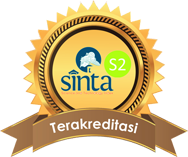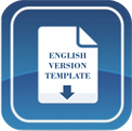Development of Inorganic Molecular Shape Model Using 3D Printer to Strengthen Student's Conceptual Understanding
DOI:
https://doi.org/10.15575/jtk.v6i2.12988Keywords:
3D printer, conceptual understanding, inorganic molecular shapeAbstract
This research aims to develop a product in the form of an inorganic molecular shape model using a 3D printer, analyze the validity, practicality, effectiveness of the product, and strengthen students' conceptual understanding using the product. The method is Research and Development (R&D) based on the Analysis, Design, Development, Implementation and Evaluation (ADDIE) model. The supporting instruments for this research are product and instrument validation sheets, product readability questionnaires, pretest-posttest questions, question during the trial, observation sheets for students' conceptual understanding, and student response questionnaire to the product. The results showed that the product developed was following the ADDIE model because the five stages were carried out systematically; the product being developed has very high validity with an average percentage of 96.88%; the average percentage of practicality is 95.17%Â which is categorized as very practical, and the average percentage of effectiveness is 94.69% which is categorized as very effective; the product developed can strengthen students' conceptual understanding shown on the average percentage of conceptual understanding indicators achievement during the trial was 90.61% and the observation result was 94.69%, both of which belong to very high category. There was an increase in the average pretest value of 33.93 and post-test of 63.99. The results of the Rasch analysis after using this product showed that the consistency of students' answers was 0.71 (quite good), the quality of the items was 0.93 (very good), and the interaction between the consistency of students' answers was 0.68 (quite good). The product can be used to strengthen students' conceptual understanding on the topic of molecular shape.
References
Akbar, S. (2013). Instrumen perangkat pembelajaran. Bandung: Remaja Rosdakarya.
Alighirl, D., Drastisianti, A., & Susilaningsih, E. (2018). Pemahaman konsep siswa materi larutan penyangga dalam pembelajaran multiple representasi. Jurnal Inovasi Pendidikan Kimia, 12(2), 2092-2200. https://doi.org/10.15294/jipk.v12i2.15735
Anas, M. (2014). Alat peraga dan media pembelajaran. Jakarta: Pustaka Education.
Anderson, L., & Krathwohl, D. (2010). Kerangka landasan untuk pembelajaran, pengajaran, dan assesmen. Yogyakarta: Pustaka Belajar.
Asmaningrum, H. P. (2017). Efektivitas penggunaan alat peraga terhadap hasil belajar kimia dan fisika pada siswa kelas IX SMP Satu Atap Wasur Merauke. Jurnal Inovasi Pendidikan SAins, 8(2), 69-77. http://dx.doi.org/10.20527/quantum.v8i2.4015
Asmuni. (2020). Problematika pembelajaran daring di masa pandemi Covid-19 dan solusi pemecahannya. Jurnal Paedagogy: Jurnal Penelitian dan Pengembangan Pendidikan, 7(4), 281-288. https://doi.org/10.33394/jp.v7i4.2941
Comina, G., Suska, A., & Filippini, D. (2014). Low-cost lab-on-a-chip prototyping with a consumer-grade 3D printer. Lab on a Chip, 14(16), 1-5.
Coward, C. (2015). 3D Printing. New York: Penguin Group (USA) Inc.
Effendy. (2017). Mulekul, struktur, dan sifat-sifatnya. Malang: Indonesia Academic Publishing.
Hasibuan, A. Y., & Jahro, I. S. (2020). Pengembangan KIT pembelajaran dari limbah sekam padi pada materi bentuk molekul kelas X SMA. Jurnal Inovasi Pembelajaran Kimia, 2(1), 6-10. https://doi.org/10.24114/jipk.v2i1.16633
Helmenstine, T. 2020. Molecule atom colors-cpk colors. Retrieved from https://sciencenotes.org/molecule-atom-colors-cpk-colors/
Kelly, J. F. (2014). 3D Printing: build your own 3d printer and print your own 3D objects. USA: Pearson Education Inc.
Khery, Y., Nufida, A., & Suryanti. (2019). Kimia Umum. Yogyakarta: CV Budi Utama.
Lee, W.W dan Owens, D.L. (2004). Multimedia-based instructional design (second edition). San Fransisco: Pfeiffer.
Nahdi, D. S., Yonanda, D. A., & Agustin, N. F. (2018). Upaya meningkatkan pemahaman konsep siswa melalui penerapan metode demonstrasi pada mata pelajaran IPA. Jurnal Cakrawala Pendas, 4(2), 9-16. Retrieved from https://core.ac.uk/download/pdf/228882831.pdf
Oktiarmi, P. (2019). Pengembangan alat peraga kimia sederhana (algatomiokul) pada materi atom, ion, dan molekul untuk meningkatkan aktivitas belajar siswa. Jurnal Guru Dikmen & Diksus, 2(2), 41-50.
Pinger, C. W., Geiger, M. K., & Spence, D. M. (2020). Applications of 3D-printing for improving chemistry education. Journal of Chemistry Education, 97(1), 112-117. Retrieved from https://doi.org/10.1021/acs.jchemed.9b00588
Plomp, T., & Nieveen, N. (2007). An introduction to educational design research. 89 in proceedings of the seminar conducted at the East China Normal University, Shanghai (PR China) (hal. 23–26).
Prasetyawati, P. (2016). Analisis pembelajaran student centered learning dalam pendekatan saintifik pada mata pelajaran sejarah di SMA Negeri sekota Palu. Jurnal Katalogis, 4(10), 130-137. Retrieved from http://jurnal.untad.ac.id/jurnal/index.php/Katalogis/article/view/7010
Rayanto, Y. H., & Sugianti. (2020). Penelitian pengembangan model ADDIE dan R2D2: teori dan praktek. Pasuruan: Lembaga Academic & Research Institute.
Riduwan. (2009). Belajar mudah penelitian untuk guru-karyawan dan peneliti pemula. Bandung: Alfabeta.
Setiawan, I., Indriyanti, N. Y., & Mulyani, S. (2018). Profil pembelajaran kimia berbasis kurikulum 2013 di kota Gorontalo dan Kota Surakarta Kelas X tahun ajaran 2016/2017. Jurnal Inovasi Pendidikan Kimia, 12(1), 2039-2054. Retrieved from https://doi.org/10.15294/jipk.v12i1.13296
Sugiono. 2009. Metodologi penelitian kualitatif dan R&D. Bandung. Alfabeta
Sumintono, B., & Widhiarso, W. (2015). Aplikasi pemodelan rasch pada assessment pendidikan. Bandung: Alfabeta.
Widoyoko, E. P. (2012). Teknik penyusunan instrumen penelitian. Yogyakarta: Pustaka Pelajar.
Zuchdi, D. (2011). Pendidikan karakter dalam perspektif teori dan praktik . Yogyakarta: UNY Press.
Zulvianda, H., Hanum, L., & Nazar, M. (2013). Pengembangan e-module kimia SMA pada materi larutan elektrolit dan non elektrolit. Jurnal Ilmiah Mahasiswa Pendidikan Kimia (JIMPK), 1(3), 9–16. Retrieved from http://www.jim.unsyiah.ac.id/pendidikan-kimia/article/view/1295
Downloads
Published
How to Cite
Issue
Section
Citation Check
License
Authors who publish with this journal agree to the following terms:
- Authors retain copyright and grant the journal right of first publication with the work simultaneously licensed under a Creative Commons Attribution-ShareAlike that allows others to share the work with an acknowledgement of the work's authorship and initial publication in this journal.
- Authors are able to enter into separate, additional contractual arrangements for the non-exclusive distribution of the journal's published version of the work (e.g., post it to an institutional repository or publish it in a book), with an acknowledgement of its initial publication in this journal.
- Authors are permitted and encouraged to post their work online (e.g., in institutional repositories or on their website) prior to and during the submission process, as it can lead to productive exchanges, as well as earlier and greater citation of published work (See The Effect of Open Access).








